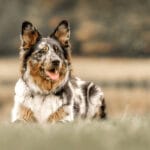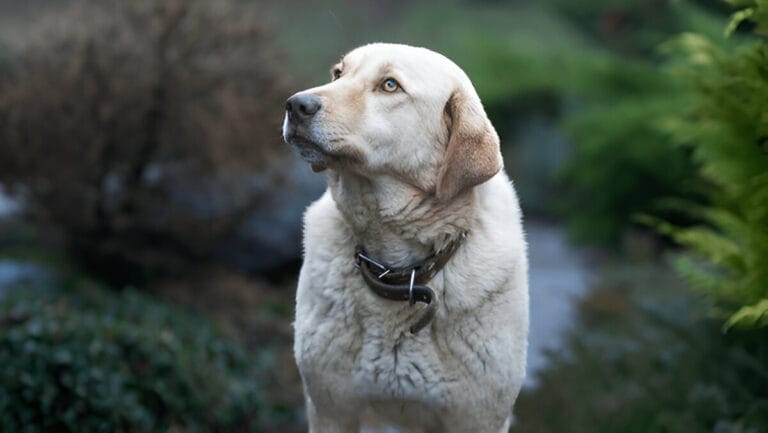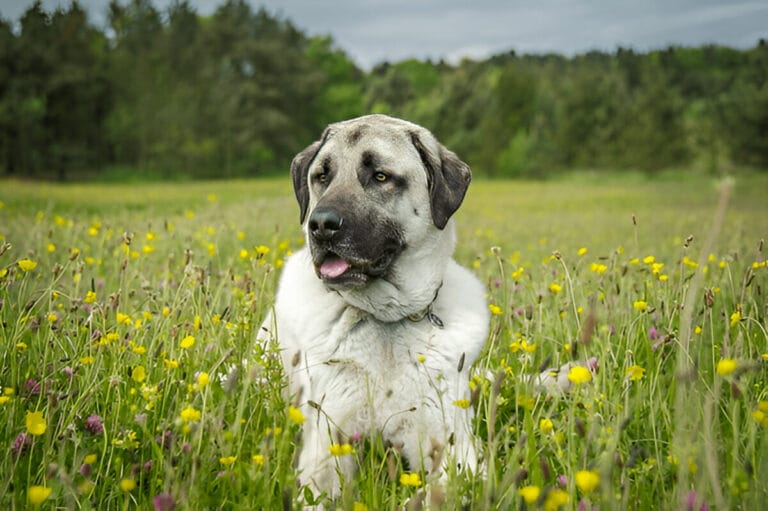Polar Bear Labrador Retriever
Writing about polar bear Labs takes me back to my first encounter with one of these stunning dogs at a local show. The Labrador Retriever breed has always fascinated me, but nothing prepared me for the ethereal beauty of what appeared to be a living, breathing arctic spirit.
These snowy white Labs represent the palest possible coat color within the yellow spectrum, requiring generations of selective breeding to achieve their ghost-like appearance.
The rarest coloration in Labradors isn’t obviously crossed with actual polar bears – that’s a common misconception I often address. Instead, these gorgeous well-favored puppies emerge from careful genetics and safe breeding practices, where the genotype requires expert knowledge to produce consistently.
Originally bred as show dogs, these pale specimens showcase the most versatile ranging possibilities within the yellow Labrador spectrum, from creamy tones to foxy red, though the polar bear lab sits at the absolute lightest end.
Including a real examination of these beautiful dogs means understanding what makes them so special beyond their snowy coats. The complete magic happens when their pale pedigree is combined with black eye rims, nose leather, and lips – this contrast makes them look remarkably like miniature bears.
I remember Walker, a 6-month-old puppy who was a beautiful example of this phenomenon, his arctic appearance making him appear almost mythical.
To answer common questions about Labrador Retrievers with this unique trait: they make good pets just like any other Lab, with the same temperament and energy levels. The world of polar bear Labs is really about focusing on the idea that nature’s palette can produce something so extraordinary within a familiar breed, proving that even the most common dog breeds can surprise us with their hidden genetic treasures.
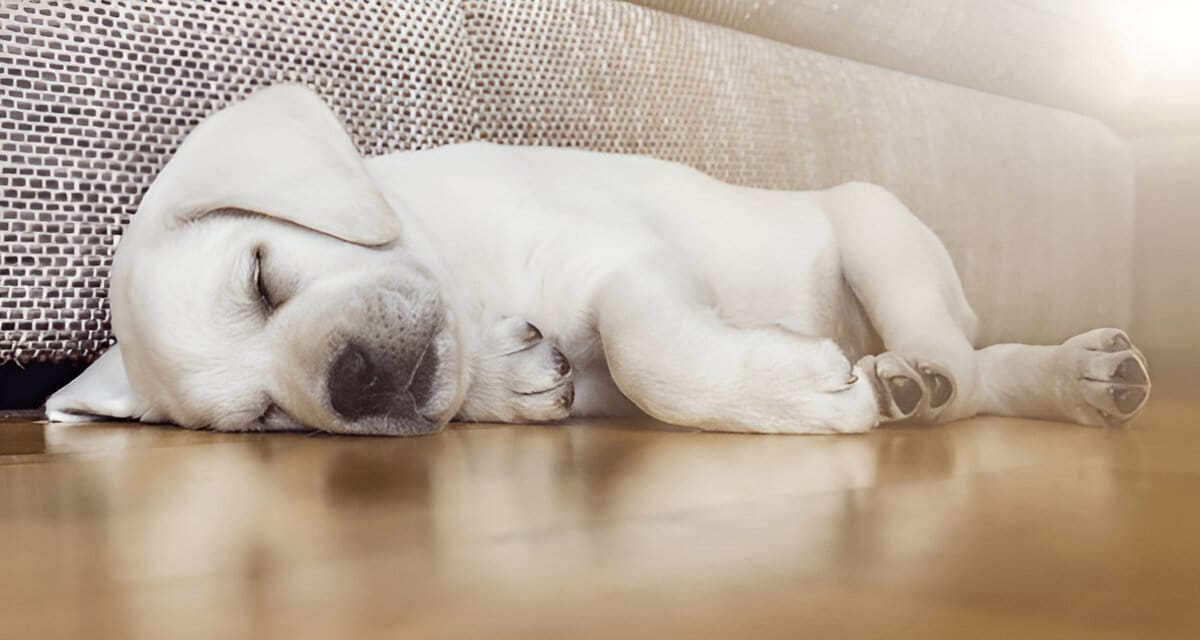
Photo credit: Shutterstock by manushot
What Is a Polar Bear Lab?
A polar bear Lab is simply a Labrador whose physical features make them look a bit like arctic wildlife, though there are no formal rules defining what traits need to be considered for this white dog classification. Not everyone agrees on the idea that all extremely pale Labs qualify as polar bear types.
Generally, these dogs have an extremely pale yellow coat that appears almost ghostly. True polar bear Labs don’t actually have pure white coats – they actually appear within the yellow breed spectrum, which can range from fox red to the palest creamy shades depending on which genes are interacting.
The basic color gene works in fascinating ways, but at the moment of birth, what really sets these puppies apart are their striking black eye rims, nose, and lips contrasting against their pale fur.
Some puppies are born with pink noses – known as dudley labs – and these often come from English show type breeding lines. Labradors usually belong to one of two distinct types: American working labs are slightly taller, leaner, and more athletic-looking, while English types are shorter and stockier with a basically bear-like build. I’ve come across several of these remarkable dogs, and met one lab whose nickname was used specifically because of his striking resemblance to polar bears.
His pure, almost iridescent coat combined with dark pigmentation around his mouth and eyes was breathtaking.
However, the Kennel Club and AKC officially recognizes only three colors: black, chocolate, and yellow – so technically, polar bear labs fit into the yellow category. White is considered a variation that people refer to, but any pale shade qualifies as official yellow Retrievers coloration.
This unique coloration came about when breeders began experimenting with phenotypes and genetics to produce different colored Labradors. These pale beauties then started making their way into the hearts of dog lovers seeking something special among the several variations including standard Black, Silver, Chocolate, Light and dark Yellow, and cream shades.
Interestingly, despite their ethereal appearance and growing reputation, these dogs share the same temperament as any other Labrador. For example, they’re common hunting companions, commonly used as gundogs with excellent field abilities, and their lighter coats actually blend well with certain surrounding foliage during winter hunts.
They’re finally being recognized as outstanding service dogs due to their patience and natural companionship instincts. However, specifically because they’ve become quite trendy, obtaining a true polar bear Lab is no easy feat – it takes experienced breeders with plenty of knowledge to consistently produce these all-white beauties.
Polar bear Lab genetics
Taking a quick closer look at the genes that make polar bear puppies so special reveals fascinating science behind their ethereal fur. These incredibly light Labradors come from the same three standard colors that are inherited in a predictable genetic way: Black, Chocolate, and Yellow.
Standard yellow coats can vary in intensity from bright fox reds down to pale buttery creams, and this variation is genetically controlled by mechanisms that aren’t completely well understood yet.
The exact genes responsible for how these colors interact haven’t been fully discovered, though we know additional factors influence these non-standard coat color expressions.
Some Labs display what’s called a dilution gene effect, though Labrador enthusiasts disagree about whether this represents a genuinely occurring recessive trait or evidence of illicit outcrossing with breeds like Weimaraner’s in the recent past.
When polar bear Labs inherit their unique coloring from both parents, the results are extremely pale coats sometimes described as champagne or ghost-like, though they’re most likely just the palest shade of yellow anyway.
The several genetic factors at play create this ethereal appearance, plus there are still mysteries about exactly how these genes work together. Despite the ongoing controversy about their origins, these dogs qualify for full pedigree papers as long as any reputable breeder can prove their qualifying ancestry through proper documentation.
Having worked with several breeders over the years, I’ve seen how passionate they are about maintaining genetic integrity while pursuing these stunning variations that capture everyone’s imagination.
Polar bear Lab temperament
Labradors tend to be energetic, affectionate, intelligent, and sociable regardless of their coat color, though polar bear Labs often display the most serene personalities I’ve encountered.
Factors that shape the finer details of each individual temperament include genetics from both parents, quality of training, their working status, amount of exercise, and how well socialized the puppies were from birth. On average, English type Labs (which most polar bear varieties are) can be described as more placid and mellow compared to American Labs, since their traditional role required them to stand patiently on the show bench rather than work intensively in the field.
Polar bear Labs from established lines are amongst the calmest of all Labradors, though they still need 2 to 3 hours of activity every day plus consistent obedience training and positive reinforcement throughout their lives.
Their gentle nature and need for constant human interaction makes them best suited for households where someone is home most of the time and able to engage with them regularly, as these ethereal beauties truly thrive on companionship and mental stimulation.
Polar bear Lab health
Polar bear Labradors should come from health tested parents, which means both breeding dogs were screened for the following conditions before mating takes place: Hip dysplasia, Elbow dysplasia, Eye disease, and Exercise induced collapse.
Unfortunately, some breeders decline to commission these tests or press ahead despite poor results, simply focusing on pairing dogs to achieve polar bear looking puppies with the palest yellow coat possible.
There’s no evidence that the extremely light coloring is specifically linked to any increased risk of illnesses – the color dilution gene that causes conditions like alopecia in some breeds doesn’t appear to affect these Labs the same way.
However, some breeding lines producing super pale Labs have been discontinued when multiple individuals develop health issues, though this typically stems from poor breeding practices rather than the coat color itself. From my experience working with several reputable breeders, the key is finding someone who prioritizes health testing over achieving the most striking appearance, ensuring these ethereal beauties live long, healthy lives regardless of their ghostly coloring.
Polar bear Lab puppies price
Responsible breeding is an expensive business, with health tests alone costing hundreds of dollars, plus the cost of traveling to find a suitable sire, whelping materials, and veterinary fees that add up quickly.
In addition, breeders who legitimately charge premium prices for their puppies often have exceptional lines – for example, lots of field trials and conformation show champions in the pedigree. A well bred polar bear Lab puppy can easily cost in excess of 800 to 1,000 dollars as a rule, with reputable breeders charging extra for Labrador unusual colors by putting a premium price on quality genetics. The difficulty of producing replicable color consistently makes these dogs particularly vulnerable to farming operations.
Puppy farmers breed purely for profit above all else, taking quick shortcuts to exploit trends without regard for genetics or health.
New buyers who want these ethereal beauties shouldn’t jeopardize their overall experience by creating demand for poorly bred dogs – this possibility has unfortunately led to many disappointing outcomes I’ve witnessed firsthand. The stark difference between a legitimate breeder’s carefully planned litter and a puppy mill’s mass production becomes obvious when you see the health, temperament, and true coloring of properly bred polar bear Labs compared to their poorly bred counterparts.
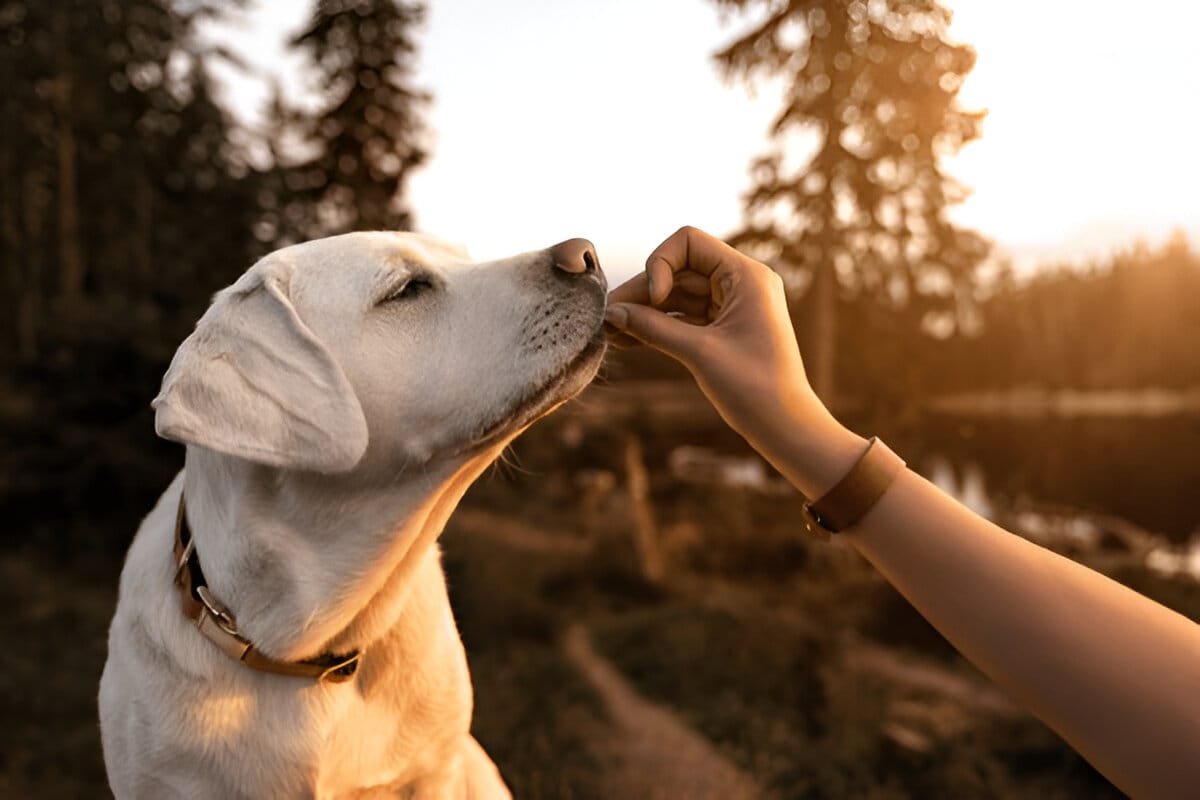
Photo credit: Shutterstock by manushot
Why Are Polar Bear Labs So Popular?
Studying different types of genetics might seem like a lot of work without any guarantee of producing true white lab puppies, but the results serve a great purpose for dedicated breeders. White labs are among the most popular Labrador types today because their gorgeous coat combined with winning personalities creates an irresistible combination that captures hearts instantly.
Reason #1: White Labs Are Calm and Docile
More often than not, white English labs are chosen over American varieties, though it doesn’t usually stop at just the yellow coloring – the differences are entirely about temperament too.
These famously calm and docile dogs are compared favorably to their energetic counterparts, making them perfect for families with children. Their shorter, stockier, and broader build makes them excellent show dogs who can stand patiently for hours, embodying the serene nature that polar bear Labs are celebrated for.
Reason #2: White Labs Are Easy to Train
While some dog breeds can be aloof or stubborn, polar bear labs couldn’t be more different with their famous eagerness to please, meaning they naturally crave direction from their leader. This makes them highly susceptible to learning new commands and tricks, plus they excel at socialization skills that make training sessions both productive and enjoyable for others involved.
Reason #3: White Labs Are Always Ready to Play
Labrador Retrievers descend from working dogs that retrieved and fetched things for people, and the apple doesn’t fall far from the tree when it comes to today’s polar bear labs being ready to play at any moment. They must be kept busy with plenty of physical and mental stimulation to stay happy and well-behaved.
While English white labs are generally calmer than their American counterparts, they still require plenty of exercise and playtime to channel their natural energy properly.
Reason #4: White Labs Are Common Service Dogs
Labradors are among the most common breeds chosen to act as service dogs because they excel in incredibly vital roles that require a lot of specialized training.
These Service animals provide essential support to people with disabilities, assisting them during daily activities and providing critical aid in the event of an unexpected emergency. Polar bear Labs’ calm temperament and eagerness to please make them particularly well-suited for this demanding but rewarding work.
Other dogs that look like polar bears
If you’re a fan of white dogs but aren’t sure a polar bear Lab is right for you, there are perhaps several canine alternatives that might capture your heart. Other polar bear dog breed options include the fluffy American Eskimo Dog, the gentle Clumber Spaniel, the charming Coton de Tulear, and larger breeds like the Great Pyrenees or Maremma Sheepdog.
You might also consider the smiling Samoyed or the spirited West Highland White Terrier, each offering their own unique personality while maintaining that coveted snowy appearance that makes these breeds so appealing to arctic-loving dog enthusiasts.
Conclusion
Polar bear labs are known for their beautiful white coats and striking dark features, making them among the best dogs to own for families seeking something truly special. Holding the number-one spot as America’s favorite dog breed, labs are known for their calm yet playful personalities that makes them the perfect size and temperament for any family. If you’re interested in adopting a polar bear lab, the good news is that reputable breeders like Snowy Pines White Labs operate a state-of-the-art facility that specializes in breeding the best English Labradors available. Snowy Pines always guarantees great temperaments and excellent health records, and of course that gorgeous white coat that makes these dogs so captivating. Take a look at Snowy Pines’ amazing polar bear lab puppies today if you’re ready to welcome one of these ethereal beauties into your home.
FAQ’S
1.Is there polar bears in Labrador?
Polar bears are found along the coast of Labrador and are most often found on sea ice, only visiting land for short periods – however, they may be forced onto land for several months when ice is unavailable. These magnificent arctic creatures occasionally visit the island of Newfoundland in spring before they move north again, which explains the regional connection to the polar bear Labrador retriever’s name.
2.What is the rarest Labrador color?
The rarest color in Labrador breeding is silver, which isn’t universally recognized by all kennel clubs since it’s considered a dilution of chocolate rather than a separate color category. Silver Labs are highly sought after due to their rarity, though they remain controversial among purebred enthusiasts who debate their genetic origins.
3.What breed of dog looks like a polar bear?
If you could shrink down a polar bear and get a domestic animal, the Samoyed looks very much like that iconic arctic creature with its furry white coat that insulates against the world’s coldest conditions. This natural protection is what’s allowing these wintry dogs to serve a variety of important roles in harsh climates, from sledding to herding reindeer in their native Siberia.
4.What kind of bears are in Labrador?
Learn about spotting polar and black bears in this special region – Two ursine species inhabit the wild hinterland of Labrador. First, let’s talk about ursus maritimus (polar bears), North America’s biggest and baddest predator that thrives along the coastal shore, which gives the polar bear Labrador retriever its inspiring namesake.
5.Which Color Labrador is Healthiest?
Researchers found that life expectancy for chocolate Labrador retrievers is significantly lower than their black and yellow counterparts in a comprehensive UK study. The research looked at vet health records from 33,320 United Kingdom-based Labradors across all colors, suggesting that polar bear Labs (being yellow variants) may have healthier genetics than chocolate varieties.



